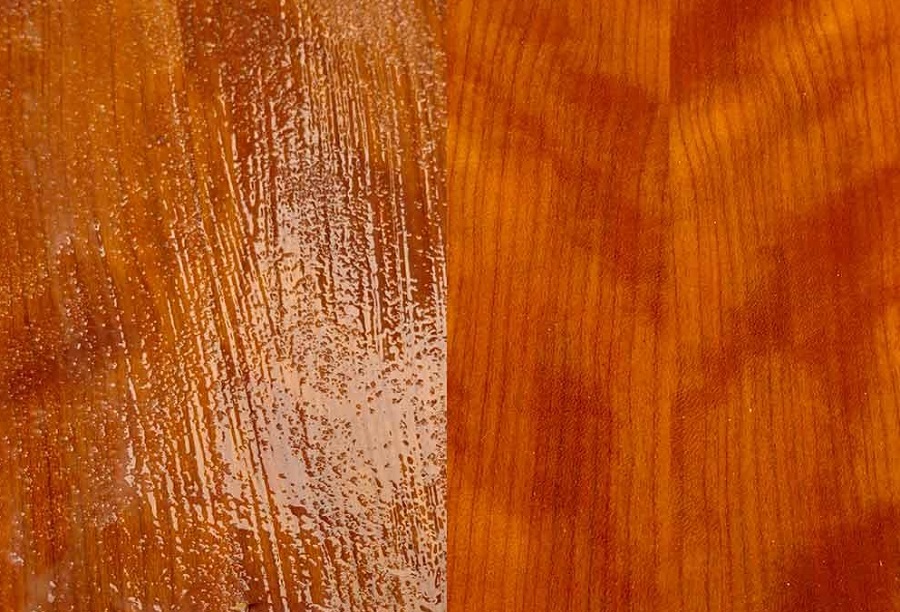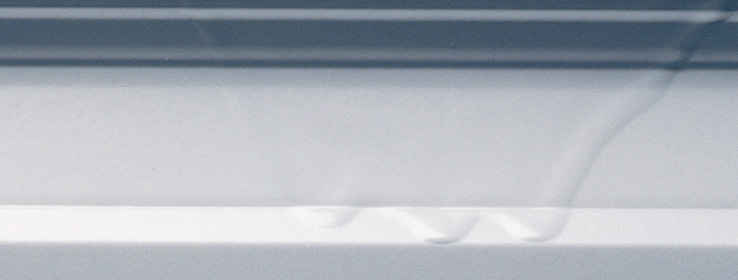Varnish and paint additives are products that are primarily aimed at factory finishers, i.e. professionals. They can be used to improve the final appearance of the film or avoid unpleasant surprises during application. Some additives are also available in DIY stores. They are the easiest to use and make coarser "adjustments". In the case of those used in industry, we are talking about fine adjustments for the best results. It is a good idea for applicators to have a collection of these varnish additives to enable them to solve problems quickly.
Additives are substances that are added to the varnish in very small quantities, from 0.1% to 3%, rarely 5%. However, the effects are remarkable and the quality of the final film much improved. They can be divided into several categories: additives that change or improve the appearance of the film, make the application easier, remove certain defects or prolong the life of the liquid material (before application). If you are involved in this area of your factory, it is a good idea to talk to your paint and varnish supplier about purchasing additives. You do not need large quantities, one liter of each is sufficient.
I do not propose to describe every additive. It would be difficult because each manufacturer has its own additives which can sometimes solve several problems. To give you an idea I will tell you about them by grouping them into a few categories.
Additives that improve the appearance and properties of the varnish or paint film
Degree of gloss of the lake is the one with which we can evaluate how glossy or matt the film will be. Sometimes we want the lake to be less glossy. We are not talking about radical transformations but a 10-15 degrees (maybe a little more). In this case we use bro brokers.
In order to be easily mixed in the varnish they are in liquid form, being dissolved in resins. In this case you must specify whether you want the varnishing agent to be water-based or solvent-based. Liquid agents cannot lower gloss below 20 (rarely 15) gloss. For an even lower gloss, powdered glossing agents are used, which can be used in both water-based and solvent-based varnishes. Mixing must be done very thoroughly (with special machines) to obtain a "clean" film with a uniform gloss.
There are additives that make the slipperier film and more pleasant cough. This will make the furniture more pleasant to the touch and easier to maintain (the dust cloth won't 'trip').
To make products used outdoors more resistant to the sun's rays, a UV absorber. The film will be stronger and the wood more protected if the finish is clear. Be careful, however, if the wood used is not resistant to the exterior, the added absorbent will not prevent discoloration over time.

Additives used in the application of finishing materials
Most additives are used for the application of stains, varnishes and paints. There are different stages of application, different ways of application, different types of wood on which the application is made and for each there is an additive that can help. For example casting application or flow-coating of water-based products, the varnish or lacquer may foam a lot and the application may not be uniform. In this case it is necessary to add a defoamer.
To ensure that the varnish or paint is evenly applied to the wood surface, add additives that "wet" the substrate better, making the lake loosen upto stretch better. There are products that reduce surface tension and you find them under the name de-volatilizing agents.
To avoid leakage when applying vertically or on carved or milled parts, use thixotropic lakes. There are also thixotropic agents which can be added to the varnishes so they don't tend to leak easily.
When the wood being applied to is tannin, acidic or basic pH, properties that can change color or affect drying, the addition of specific additives can solve the problems. There are anti-tin additives or pH-regulating additives.

Additives that reduce or extend drying time
The drying of finishes is not always related to solvent evaporation. In the case of UV-curable varnishes or two-component varnishes, the chemical reaction that causes the varnish to harden can be slowed down or speeded up with additives. It all depends on what you need. A faster cure shortens the working time and a slower cure gives the varnish time to set very well (very useful for gloss varnishes).
Atmospheric humidity can sometimes influence drying. Here too, things can be improved by using a specific additive.
Additives that help reduce defects
In the pages of the magazine you will find a series called Finishing defects which describes in detail the defects that can occur during product application and how to avoid them. When defects are likely to occur (cracks in the film, poor adhesion to the substrate, bubbles or opalescence in the film) it is good to use the right additives to reduce this risk.
There is anti-crater additivesvery good if there are silicone vapors in the area (from window fitting) or adhesion-enhancing additives when the application is made on causticized chipboard or glass. A very small amount of additive added will save you a big headache.

Materials or methods with the same result as varnish additives
There are lots of other varnish additives that can help, I certainly haven't mentioned them all. For example, if you work with water-based products, you have anti-fermentation additives which prevents, on very hot summer days, the product that has been diluted with tap water from altering. When coloring wood with stains, the following can be used additives for standardisation, additives to better mark the pores or for some effect (positive coloration of the resinifera). The examples go on.
These operations can also be adjusted using other materials. Diluanții are of great help when drying solvent-based finishes because mixtures can be made to meet precise requirements. Fast evaporating thinners can be used for rapid drying and heavy volatile thinners for retarding drying. With water-based products it is more difficult because the solvent is only one - water. In this case additives are very useful.
Application methods are also important. To avoid the occurrence of a defect, a different way of applying the product can be chosen, without the addition of an additive.
Varnishing, staining a piece of furniture or other wood product is important and should be done to get the best results. Because the finish is what sells. I have said many times that you can have the best quality wood, if the finish is ugly, the furniture will remain unsold. And poor quality wood can be ennobled with the finish. So if you can use additives to achieve perfect surfaces, don't hesitate to do so.
I hope you find the article useful. If you think others will appreciate it, feel free to share it. And if you have any comments, questions or additions, please leave them in the dedicated space. It will be a good opportunity to discuss finishing 🙂 .

































Hello, I am interested in finding a distributor of wood finishing oils and baths.
Hello!
If you refer to someone who distributes oils, you can find natural oils from Kreidezeit on naturalpaint.ro.
All the best!
Hello,
I keep looking for those additives in "There are additives that make the film more slippery and the tuft more pleasant. This will make the furniture more pleasant to the touch and easier to maintain (the dust cloth doesn't 'stumble')."
But I can't find a term for them in the search. Do you know what they are called?
Thank you very much
Hello!
It is very difficult to find such additives in the market. They are generally available directly from the factory to the technicians of companies that sell varnishes and paints.
For the film to be slippery it must be very well stretched, well sanded and more glossy. To be well stretched, release additives are used (also called anti-crater). They modify the surface tension of the varnish.
For pleasant coughing, adhesives containing waxes compatible with the lake are used. They can be water-based or solvent-based. They are generally synthetic waxes that migrate to the surface of the varnish layer during drying, giving a waxed, pleasant-to-touch appearance.
These additives help, but they can't make a surface look perfect. For this the wood must be well sanded, the varnish well chosen and there must be sanding between the layers of varnish.
All the best!